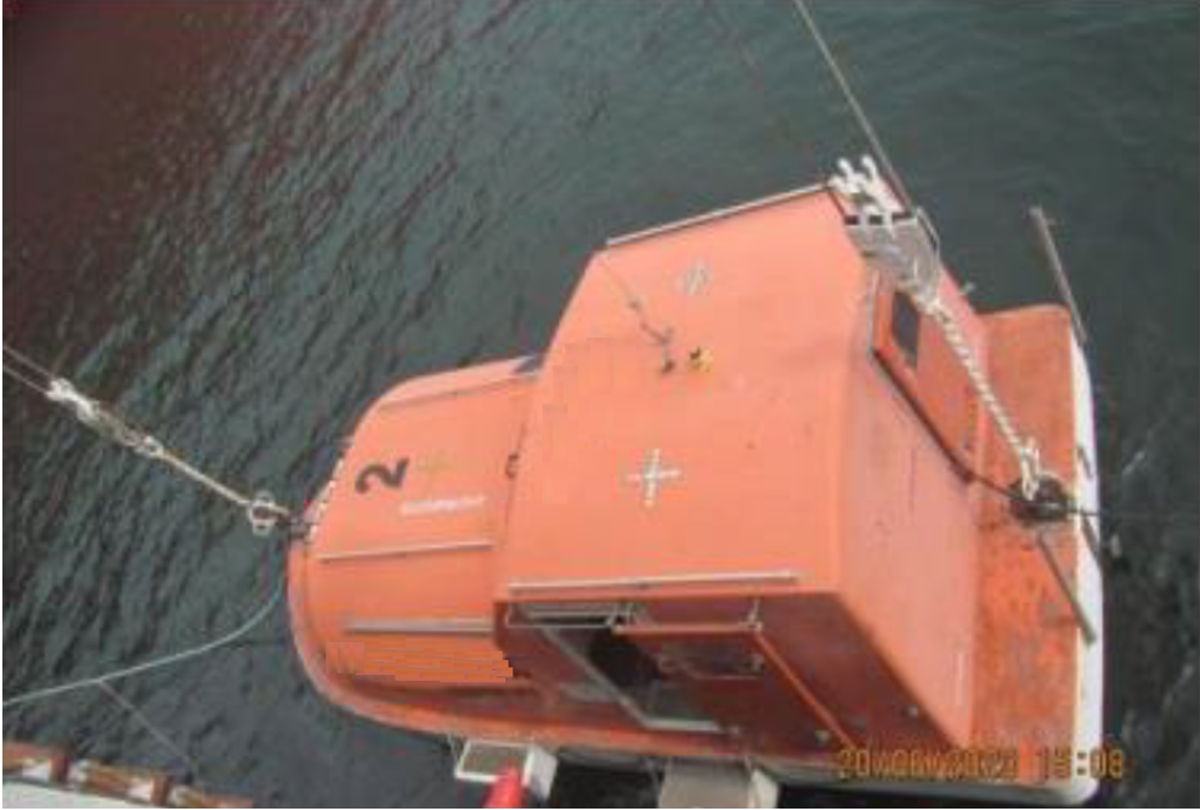Fall from pilot ladder
- Safety Flash
- Published on 12 September 2023
- Generated on 27 November 2025
- IMCA SF 22/23
- 2 minute read
Jump to:
A Chief Officer slipped and fell from a pilot ladder onto a lifeboat, suffering minor bruising.
What happened?
The incident occurred on a vessel which was coming to the end of ten days spent alongside in a shipyard.
The crew were performing a last pre-departure mandatory drill, which was a man overboard recovery with the lifeboat afloat, combined with the periodic over-boarding sea trial of the lifeboat itself.
A Pilot ladder has been rigged to join the lifeboat which was already lowered into the water.
The Chief Officer climbed down the ladder, and as he did so it suddenly slid downward.
He let go of the ladder immediately for fear of getting his hands caught between the sliding ladder and the hull and fell about 2 m directly onto the lifeboat. He was able to clamber safely back on board.
The next morning, he reported small bruises on his chest: no medicines were prescribed, and he continued to work normally.

lifeboat

crew member climbing down pilot ladder
What was the cause?
The pilot ladder was not properly secured.
Lessons learned
- Work Preparation – always rig the Pilot Ladder securely, ensuring that it is properly attached to the vessel’s side and positioned at the correct distance from the waterline. The installation of the pilot ladder should be checked by an officer, who is responsible for ensuring it is correctly installed and complies with the required safety standards
- Training Familiarisation – ensure the crew responsible for rigging and handling the Pilot Ladder are properly trained and familiar with the proper procedures for deploying, securing, and stowing the ladder.
Related safety flashes
-
IMCA SF 03/23
18 January 2023
-
-
IMCA SF 34/20
16 December 2020
-
-
IMCA SF 13/17
2 June 2017
-
IMCA Safety Flashes summarise key safety matters and incidents, allowing lessons to be more easily learnt for the benefit of the entire offshore industry.
The effectiveness of the IMCA Safety Flash system depends on the industry sharing information and so avoiding repeat incidents. Incidents are classified according to IOGP's Life Saving Rules.
All information is anonymised or sanitised, as appropriate, and warnings for graphic content included where possible.
IMCA makes every effort to ensure both the accuracy and reliability of the information shared, but is not be liable for any guidance and/or recommendation and/or statement herein contained.
The information contained in this document does not fulfil or replace any individual's or Member's legal, regulatory or other duties or obligations in respect of their operations. Individuals and Members remain solely responsible for the safe, lawful and proper conduct of their operations.
Share your safety incidents with IMCA online. Sign-up to receive Safety Flashes straight to your email.